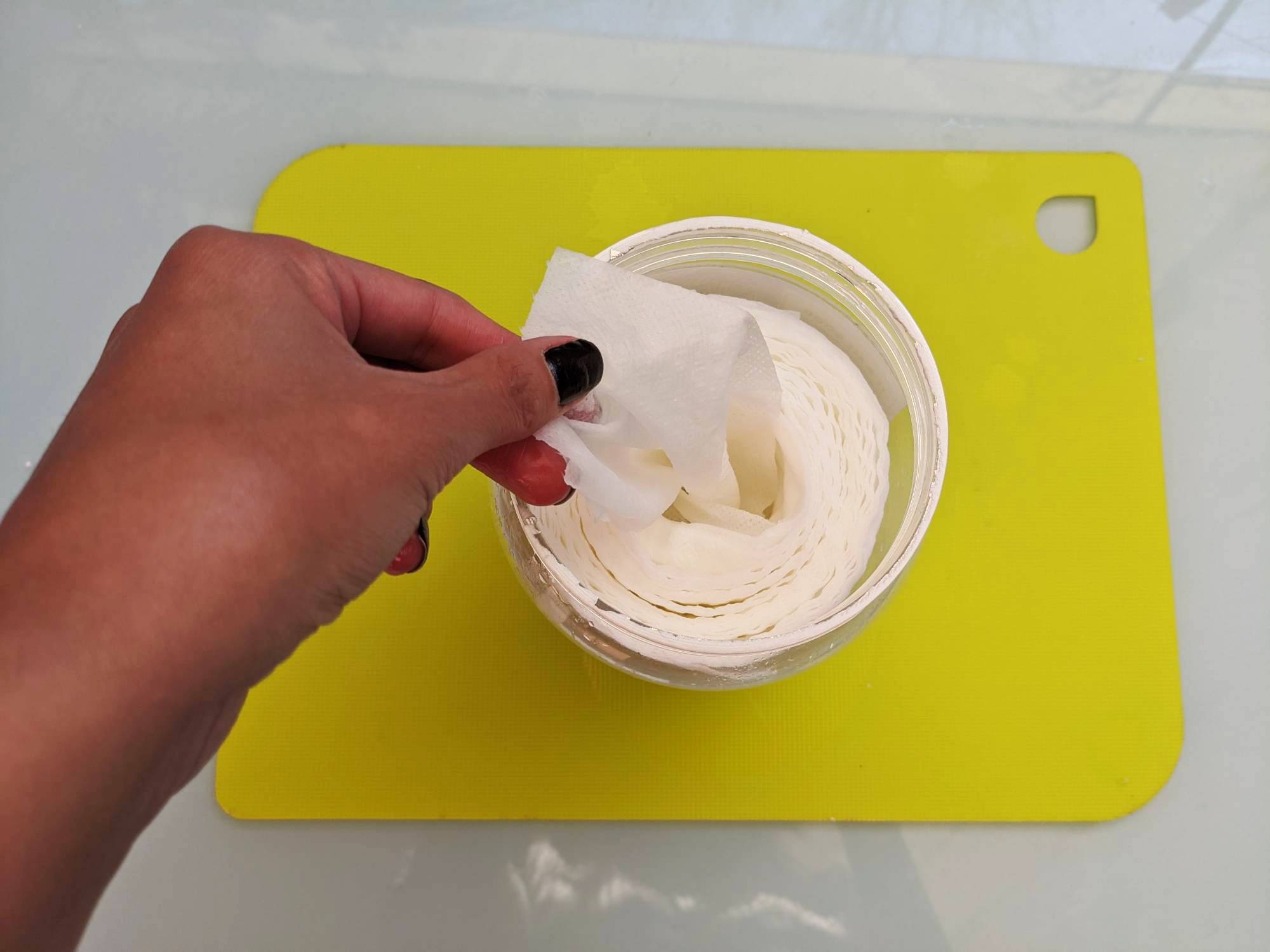

Follow all of PopSci’s COVID-19 coverage here, including tips on cleaning groceries, ways to tell if your symptoms are just allergies, and a tutorial on making your own mask.
Shortages have been a big side effect of the pandemic. They started with a whole range of household cleaning products flying off the shelves in March, and have continued through today, with people recently reporting trouble finding products such as disinfecting wipes.
We can’t do anything about some shortages, but there are others you can easily beat with a little DIY—sanitizing and baby wipes are two of them. Whether you want to clean your baby’s bottom or your kitchen counter, you can use the same steps with two different recipes to keep things squeaky clean.
Stats
- Time: 5 minutes
- Material cost: $6
- Difficulty: easy
Materials
- Air-tight container (or an empty wipe container)
- 1 roll of strong paper towels
For household cleaning wipes
- 3 ½ cups of 70% rubbing alcohol
- 1 cup of cold water
- 1 tablespoon of dish soap
For baby wipes
- 2 cups of warm water
- 2 tablespoons of baby wash or soap (or pure-castile liquid soap for babies)
- 1 tablespoon of baby oil (or sweet almond oil or coconut oil)
Tools
- Liquid measuring cup
- Tablespoon
- Very sharp or serrated knife
Instructions

Whichever recipe you’re following, using the correct quantities is key. “One big problem with homemade products is that people tend to make them quickly, and then they will not be as effective as the ones that are produced with quality control and quality assurance in a factory,” says Rachel Noble, a microbiologist and professor at the University of North Carolina at Chapel Hill. These disinfecting wipes are soaked in a 70% alcohol solution, following household cleaning recommendations from the Centers for Disease Control and Prevention, and they work well on surfaces such as tables and kitchen counters.
A number of tutorials on the internet suggest using a bleach and water solution to make this type of wipe, but doing so is not ideal because it has a shelf life of only 24 hours. Bleach degrades over time and loses its effectiveness against viruses and bacteria, a process that accelerates when water is added to the mix. Using this type of solution would require you to make new wipes everyday, an inefficient move no matter how messy your family is.
1. Make your solution. Whether you’re DIY-ing disinfecting wipes or baby wipes, measure the water in a cup and then put the rest of the ingredients right into it. Mix well and let it sit.
- Note: To make an alternative version of this solution, you can replace the baby wash or shampoo with pure-castile baby soap, and the baby oil with a vegetable oil of your choosing. If you want to use another type of oil, keep in mind that they all have different shelf lives, which will determine how long your wipes remain effective. For example, sweet almond oil and coconut oil will keep up to one year, while grapeseed oil will only do for six months. If you choose an oil that is in a solid state, put it in a heat-safe bowl and melt it in the microwave before adding it to your mix.
2. Measure your towel roll against your container. Make sure to leave a space of at least 1 inch between the top of the roll and the lid of your container—this will make it easier to seal the container in case you pull more wipes than you actually need. You don’t need a measuring tape—it’s OK to eyeball it.

- Note: You can use a recycled wipe container or any plastic one you have around your kitchen. Air-tight containers are the best option, since excess air will dry out your wipes faster. If you have a pack of dried-out store-bought wipes, you can forgo the paper towels altogether and just use your solution to revive them.
3. Cut the towel roll. A sharp knife will give you a cleaner cut, but a serrated knife will get you through the roll much quicker. This will be a bit of a workout depending on the kind of roll you get, but here’s a pro tip: Avoid taking the knife out once you start cutting.
4. Put the towel roll in the container and pour in the solution. Make sure to get it all over the towels, distributing the liquid as evenly as possible. Let it sit for two minutes.
5. Carefully remove the cardboard tube and pull your first wipe. If the tube is not soft enough, let it sit for an extra minute. Pull your first wipe out of the center (as you would store-bought wipes) and close your container.

- Tip: If you’re using a food container and plan on making wipes often, you might want to cut an “X” in the center of the lid so it can act as a dispenser. Just keep in mind that any wipe left there will probably dry before you get the chance to use it.
Updated August 24th at 11:15 a.m.: This story has been updated to more accurately reflect which concentrations of alcohol will result in sanitizing wipes that are at least 70% alcohol.
